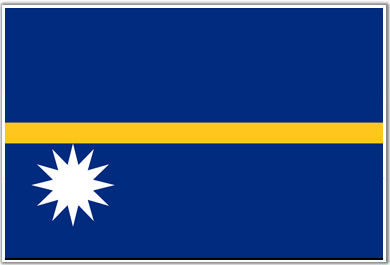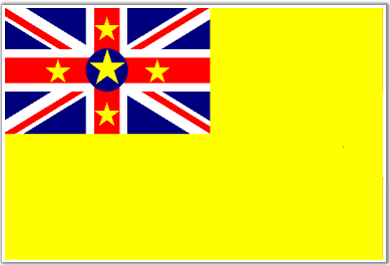I got back to Tonga on Monday, and was driven almost directly from Fua'amotu airport to the campus of the 'Atenisi Institute, where 'Opeti Taliai, subject of a recent interview on this blog, was giving a seminar on 'Thinking as the Art of Unwrapping'.
After a week of Auckland's autumnal weather I sat at one end of the Lolo Masi building, sweating and scratching in the tropical humidity, and feeling like a diver decompressing after a long dip in cool waters, as 'Opeti moved from philosophy to linguistics to Tongan oral history without raising a sweat or misplacing a syllable. In an alliterative burst near the end of his address, the Dean of 'Atenisi brought the names Heidegger, Hegel and Helu together. Karl Marx made a cameo appearance, and the problems of German idealist philosophy were made to foreshadow the problems of Tongan social reformers.
In one of the more meditative sections of his talk, 'Opeti mulled over the differences between the word fakakaukau, which is nowadays often used by Tongans to describe the act of thinking, and the semi-obsolete word faka'au'au. Kaukau means to take a bath; 'au'au can describe the acts of scraping or unwrapping. 'Opeti suggested that both words were descendants of mafaufau, which Samoans use to denote thinking. Why, he wondered, had Polynesians chosen, unknown centuries ago, to use bathing and unwrapping as metaphors for thought?
During the discussion which followed 'Opeti's talk, I told him how gentle both the traditional Tongan metaphors for thought seemed to me. By contrast, modern Western societies often choose cold, brutal metaphors for thinking. We talk of conducting autopsies for ideologies which we perceive have failed; we say that a thinker has cut to the bone, when we consider that he or she has excelled; we try to make penetrating analyses of this or that subject.
Where we treat thinking as a violent, invasive activity, Tongan metaphors suggest it is something altogether gentler - a washing, and hence purification, of the brain, or the unwrapping of a gift. 'Opeti drew a parallel between the Tongan sense of knowledge as something already inherent in our minds and environment, and simply waiting to be revealed, and ancient Greek ideas about intellectual inquiry. He pointed out that Plato believed that teaching involved the recovery of knowledge students had gained in previous lives, and stored deep in their brains.
'Opeti also reported that, during some of the thousands of lectures he gave at the school he founded, Futa Helu linked the act of thinking to the deflowering of a huge idol which apparently once enjoyed pride of place in a godhouse on a Tongan island. The idol, which was wrapped up in tapa cloth, had been consulted, during solemn and visionary ceremonies, for decades or centuries, by a fearful and reverent populace. When traditional religion began to collapse in the early decades of the nineteenth century, though, a group of Tongans entered the godhouse and unceremoniously removed the idol's tapa cover. After stripping off layer after layer after layer of tapa, the startled defilers discovered that the idol they had worshipped for so long was nothing more than a small seashell. By unwrapping the idol, Tongans had exposed an important truth.
Kik Velt, the science teacher and IT entrepreneur whose penchant for bright flowing dresses and enormous earrings and noserings has been made famous by
Tongan Ark, Paul Janman's documentary feature film about life at 'Atenisi, was less than impressed by the waffling of humanities graduates like 'Opeti and me. "You guys talk and talk and never reach any definite conclusion" he complained. "I prefer physics - physics is exact." I told Kik that many sociologists have desperately jealous of the precision that the natural sciences can attain - my old PhD supervisor Ian Carter complained about 'physics envy' amongst his colleagues - but that it wasn't clear whether it was possible, nor even desirable, to formulate precise laws that could describe and predict the behaviour of millions of humans, given the enormous number of variables involved in human behaviour. "In physics there are only four or five variables" Kik replied. "And that is very good".
The day after 'Opeti's seminar I devoted a Creative Writing class to the literary technique known as stream of consciousness, and to James Joyce's epic and chaotic attempt to record the variable inner lives of a handful of Dubliners on a July day in 1904. I tried to ease into the subject of stream of consciousness by playing Bob Dylan's 'Visions of Johanna', which I consider a fine example of the genre, but I got a much better response when I read a passage from the sixty-one page monologue Molly Bloom offers up at the end of
Ulysses. I'm not sure whether it was the smuttiness of Molly's thoughts or the daring of Joyce's technique which had the students laughing loudly and asking for a copy of
Ulysses - a book which, I had to confess, I had never managed to finish.
After discussing Joyce the class had a go at stream of consciousness writing. Here's the attempt I made to write down the thoughts crawling through my head at a quarter past ten last Tuesday morning. My students guffawed.
...
Sweat. Why am I sweating so much this morning? Or do I only think I am sweating more than I usually do in Tonga because I have spent a week in Auckland, where the cool air kept my brow dry? Sweat: isn't this what all humans have in common? Socialists use a red flag, to symbolise the oneness of humanity, our common blood, the disgusting mess of tube-shaped organs and bulging veins and pussy ulcers that we all carry under the thin disguise we call skin. But aren't humans divided by different blood groups, different lines of descent, whakapapa? 'Opeti says Tongans are obsessed by genealogy, the narrative in their blood. Genealogy is a type of coagulation. Black slick of blood on the floor of an abandoned hospital in the overgrown centre of Tongatapu, vines reaching through the corners of the windows with spindly fingers, like the zombie survivors of a made-for-cable apocalypse, coconuts falling through the ceiling like shells, or severed heads. If a Tongan has a blood transfusion, does he have to add new branches, spindly and low-hanging, to his family tree, to indicate new cousins, new half-brothers? Or are his new blood-relatives epiphytes, strangely separate from him even as they link themselves with him? Sweat, not blood, is truly democratic: there are no sweat-groups, no discrete Tongan or palangi or Chinese varieties of sweat - there is only the same persistent fluid, everywhere. Why don't socialists fly a sweat-coloured flag? My sweat drips onto the page: rain falls onto the soil, onto the gardens of Tongatapu, Tonga Lahi, the great island. Could sweat nourish the earth, swell the boils of tomato plants, excite the banana trees until they produce erections?
[Posted by Scott Hamilton]





